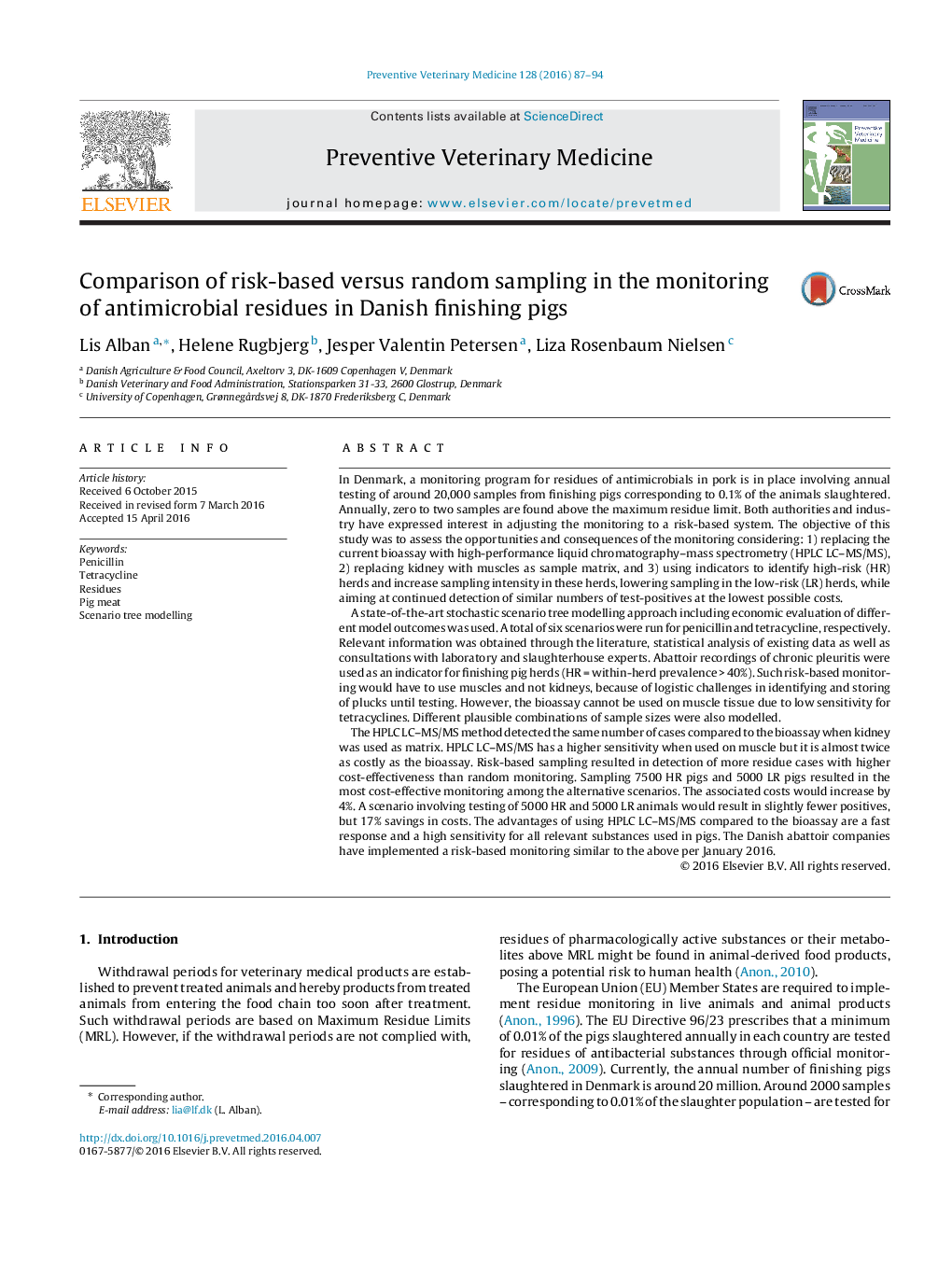| کد مقاله | کد نشریه | سال انتشار | مقاله انگلیسی | نسخه تمام متن |
|---|---|---|---|---|
| 5792935 | 1554160 | 2016 | 8 صفحه PDF | دانلود رایگان |
عنوان انگلیسی مقاله ISI
Comparison of risk-based versus random sampling in the monitoring of antimicrobial residues in Danish finishing pigs
ترجمه فارسی عنوان
مقایسه مقادیر ریسک پذیری و تصادفی در نظارت بر مانده های ضد میکروبی در خوک ها به اتمام دانمارک
دانلود مقاله + سفارش ترجمه
دانلود مقاله ISI انگلیسی
رایگان برای ایرانیان
کلمات کلیدی
پنیسیلین، تتراسایکلین، باقی مانده گوشت خوک، مدل سازی درخت سناریو،
موضوعات مرتبط
علوم زیستی و بیوفناوری
علوم کشاورزی و بیولوژیک
علوم دامی و جانورشناسی
چکیده انگلیسی
The HPLC LC-MS/MS method detected the same number of cases compared to the bioassay when kidney was used as matrix. HPLC LC-MS/MS has a higher sensitivity when used on muscle but it is almost twice as costly as the bioassay. Risk-based sampling resulted in detection of more residue cases with higher cost-effectiveness than random monitoring. Sampling 7500 HR pigs and 5000 LR pigs resulted in the most cost-effective monitoring among the alternative scenarios. The associated costs would increase by 4%. A scenario involving testing of 5000 HR and 5000 LR animals would result in slightly fewer positives, but 17% savings in costs. The advantages of using HPLC LC-MS/MS compared to the bioassay are a fast response and a high sensitivity for all relevant substances used in pigs. The Danish abattoir companies have implemented a risk-based monitoring similar to the above per January 2016.
ناشر
Database: Elsevier - ScienceDirect (ساینس دایرکت)
Journal: Preventive Veterinary Medicine - Volume 128, 1 June 2016, Pages 87-94
Journal: Preventive Veterinary Medicine - Volume 128, 1 June 2016, Pages 87-94
نویسندگان
Lis Alban, Helene Rugbjerg, Jesper Valentin Petersen, Liza Rosenbaum Nielsen,
